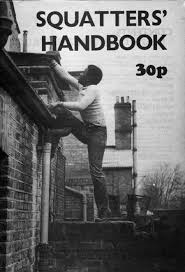The BC Court of Appeal upheld a Supreme Court decision that notaries are not allowed to prepare wills in British Columbia that create life estates or trusts under the Notaries act – in the decision Society of Notaries v Law Society of British Columbia 2017 BCCA 448.
The decision largely revolved around an interpretation of section 18 of the Notaries act RSBC , and in particular section 18 (b) (1) that states:
A member enrolled and in good standing may do the following:
b) draw and supervise the execution of wills
1) by which the will- maker directs the will makers estate to be distributed immediately on death;
2) that provide that if the beneficiaries named in the will predecease the will maker, there is a gift over to alternative beneficiaries vesting immediately on the death of the will maker, or
3) that provide for the assets of the deceased to vest in the beneficiary or beneficiaries as members of a class not later than the date when the beneficiary or beneficiaries or the youngest of the class attains majority.
The court reviewed the history of the legislation in British Columbia pertaining to notaries and referred to a previous decision in Law Society of British Columbia v. MacDonald 2013 BC SC 1204, that restrained the notary from engaging in the unauthorized practice of law, wherein the notary had drawn a will that included a trust and a life estate.
The McDonald decision stated that the notaries act appears directed at simple wills, where the gift is distributed both legally and beneficially immediately
The McDonald decision stated that the interpretation of the words distributed immediately on death in section 18 (B)(1) referred to the immediate distribution of the estate, and did not mean that some beneficial interest will be distributed immediately with rights to full legal title and to possession to be distributed later because the remainder man’s right to distribution is postponed by the life tenant’s right to possession, a will that contains a life estate does not affect immediate distribution.
The court concluded that when comparing the wording of the Legal Profession act and the Notaries act, it was evident that the legislative assembly authorize notaries to draw only the three types of wills described in sections 18 B, (1), (2), and (3).
That provision is disjunctive in that each of its subsections describes a different type of will.
The court then looked at several dictionary interpretations of the words distribute or distribution and found a distinguishing interpretation between the use of the word distributed and the use of the word vested into other subsections, that failed to support the legal argument advanced by the notaries.
The court referred to Jarman on Wills, as approved in the decision Browne v. Moody 1936 AC 635 that stated:
“ Even though there is no other gift than in the direction to pay or distribute in future: yet if such payment or distribution appeared to be postponed for the convenience of the fund their property, the vesting will not be deferred until the period in question. Thus, where a sum of stock is bequeathed to A for life, and after his decease, to trustees, upon trust to sell and pay and divide the proceeds to in between C and D, or to pay certain legacies there out to C. Indeed, as the payment or distribution is evidently deferred until the deceased of A, for the purpose of giving precedence to his life interest, the alternator legatees take a vested interest at the decease of the testator.”
Accordingly, the court rejected the notaries argument that the legislature had authorized notaries to draw wills that contain life estates and trusts in which the beneficial interest or interests vest immediately on the death of the will maker.








 A prospective client called yesterday inquiring whether three siblings who had joint tenancy with a fourth sibling, can force a sale so as to buy out the troublemaking fourth sibling.
A prospective client called yesterday inquiring whether three siblings who had joint tenancy with a fourth sibling, can force a sale so as to buy out the troublemaking fourth sibling.